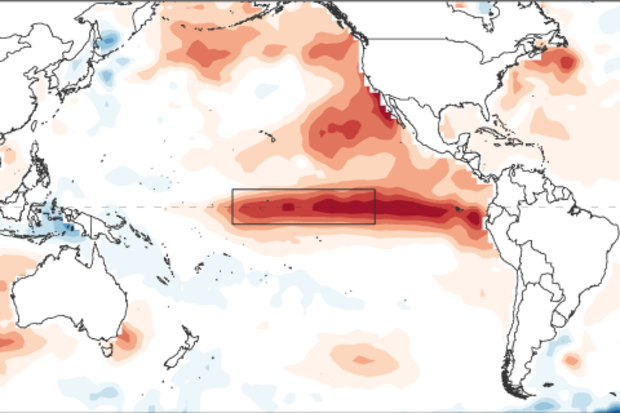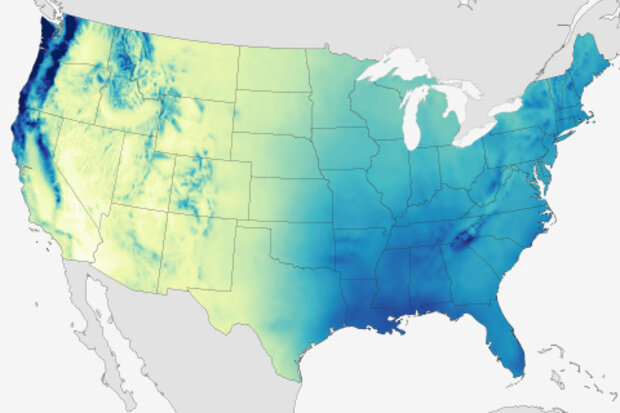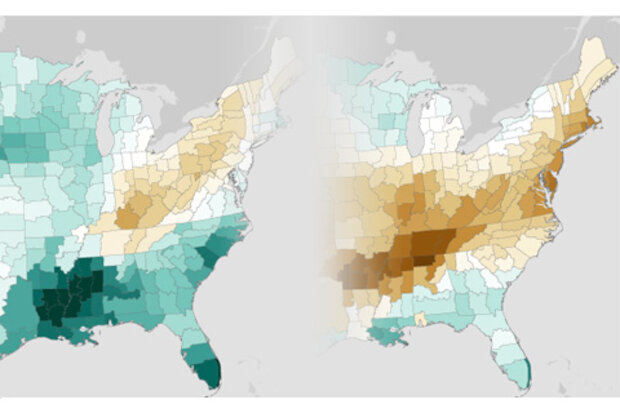Blogs
The peak of our current El Niño is expected to occur in the next month or so… but what does that mean? We measure El Niño events by how much warmer the surface waters in a specific region of the equatorial Pacific are, compared to their long-term average. The difference from average is known as the “anomaly,” and we use the average anomaly in the Niño3.4 region as our primary index for El Niño. When the index in this region is at its highest, we have our peak El Niño.
However, El Niño-related impacts have been occurring around the globe for months already, and will continue for several months after the warmest temperatures occur in the tropical Pacific Ocean. For example, du…
Read article
Many factors contribute to the climatology of a given location, including how close to the equator you are, proximity to the ocean, and elevation. But when it comes to what causes climate to vary over seemingly short distances, few things can compare to the influence of topography.
Take my city, for example. I live in Asheville, in western North Carolina, a small city in the heart of the Southern Appalachians. I can drive ten minutes and be in one of the driest locations east of the Mississippi, or drive an hour and be in one of the wettest. That the temperature and precipitation patterns that we experience here can be so different from somewhere just a few miles away is due not just to e…
Read article
Four years of drought in California. Back-to-back cold and snowy winters over the Midwest and Northeast, while balmy in the West. What’s next, thunder, hail, or maybe locusts and frogs? Or will this winter bring more “normal” winter weather? Actually thunder and hail isn’t too far-fetched this winter, at least in the Southeast, but more about that later. The jury’s still out on the locusts and frogs. So what can we expect this winter?
Since this post is appearing on the ENSO blog, readers are well aware that El Niño developed last spring and is currently among the strongest events on record back to 1950. In addition, previous posts have discussed how El Niño can impact the weather and…
Read article
As we approach peak pumpkin spice latte season, we’re also closing in on the peak of the 2015-2016 El Niño, expected by forecasters to occur in the late fall or early winter.
This El Niño continues to rank among the strongest in our records, which start in 1950. The July-September 3-month average sea surface temperature (the ONI) was 1.5°C above normal, third in line behind July-September 1987 (1.6°C) and 1997 (1.7°C). The atmospheric response to the warmer-than-average sea surface temperatures is keeping pace, too: the Equatorial Southern Oscillation Index (EQSOI) is -2.2. This is second to 1997’s -2.6, and well ahead of the next two El Niños on the list (1972 and 1982, tied at -1.4).
…
Read article
Let’s face it: El Niño is the life of the party. He’s the Most Interesting Child in the World. The good folks over at The ENSO Blog have filled up a whole blog, and still there are enough leftovers for Beyond the Data, where we don’t always blog about teleconnections, but when we do, we prefer El Niño.
We’ve already written about how El Niño will push the needle toward 2015 being the warmest year on record. But thinking a little more directly about the state of the climate in the U.S., how might a strong El Niño impact things here? Will it put a dent in the Western U.S. drought, one of the defining climate events of the decade? What about the rest of the country?
If you’ve been followi…
Read article




